Sayantan Mahinder
Private Federated Learning In Real World Application -- A Case Study
Feb 10, 2025Abstract:This paper presents an implementation of machine learning model training using private federated learning (PFL) on edge devices. We introduce a novel framework that uses PFL to address the challenge of training a model using users' private data. The framework ensures that user data remain on individual devices, with only essential model updates transmitted to a central server for aggregation with privacy guarantees. We detail the architecture of our app selection model, which incorporates a neural network with attention mechanisms and ambiguity handling through uncertainty management. Experiments conducted through off-line simulations and on device training demonstrate the feasibility of our approach in real-world scenarios. Our results show the potential of PFL to improve the accuracy of an app selection model by adapting to changes in user behavior over time, while adhering to privacy standards. The insights gained from this study are important for industries looking to implement PFL, offering a robust strategy for training a predictive model directly on edge devices while ensuring user data privacy.
Retrieval Augmented Correction of Named Entity Speech Recognition Errors
Sep 09, 2024
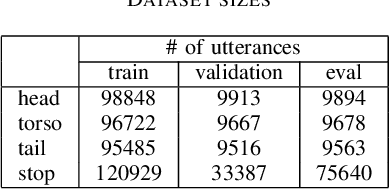

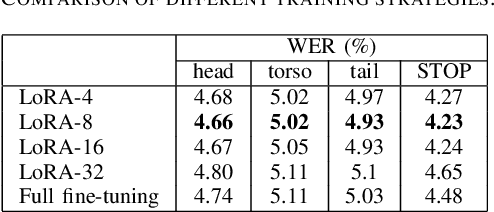
Abstract:In recent years, end-to-end automatic speech recognition (ASR) systems have proven themselves remarkably accurate and performant, but these systems still have a significant error rate for entity names which appear infrequently in their training data. In parallel to the rise of end-to-end ASR systems, large language models (LLMs) have proven to be a versatile tool for various natural language processing (NLP) tasks. In NLP tasks where a database of relevant knowledge is available, retrieval augmented generation (RAG) has achieved impressive results when used with LLMs. In this work, we propose a RAG-like technique for correcting speech recognition entity name errors. Our approach uses a vector database to index a set of relevant entities. At runtime, database queries are generated from possibly errorful textual ASR hypotheses, and the entities retrieved using these queries are fed, along with the ASR hypotheses, to an LLM which has been adapted to correct ASR errors. Overall, our best system achieves 33%-39% relative word error rate reductions on synthetic test sets focused on voice assistant queries of rare music entities without regressing on the STOP test set, a publicly available voice assistant test set covering many domains.
Applying RLAIF for Code Generation with API-usage in Lightweight LLMs
Jun 28, 2024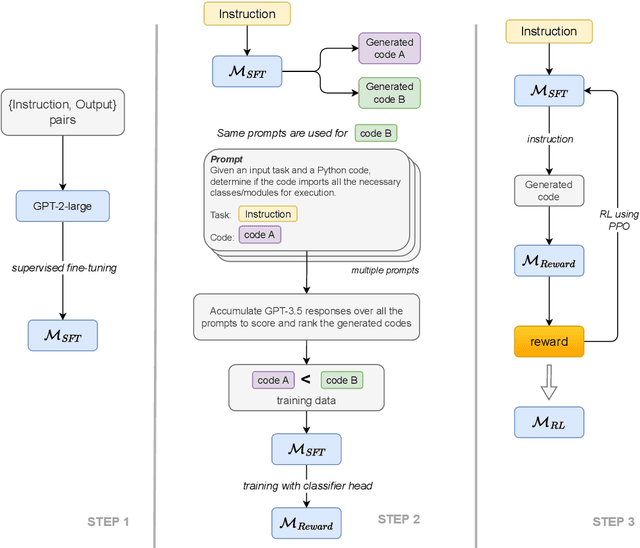

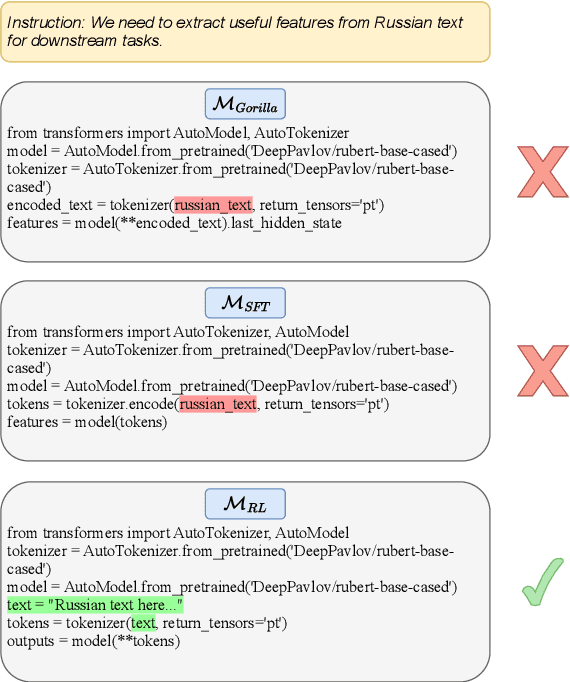
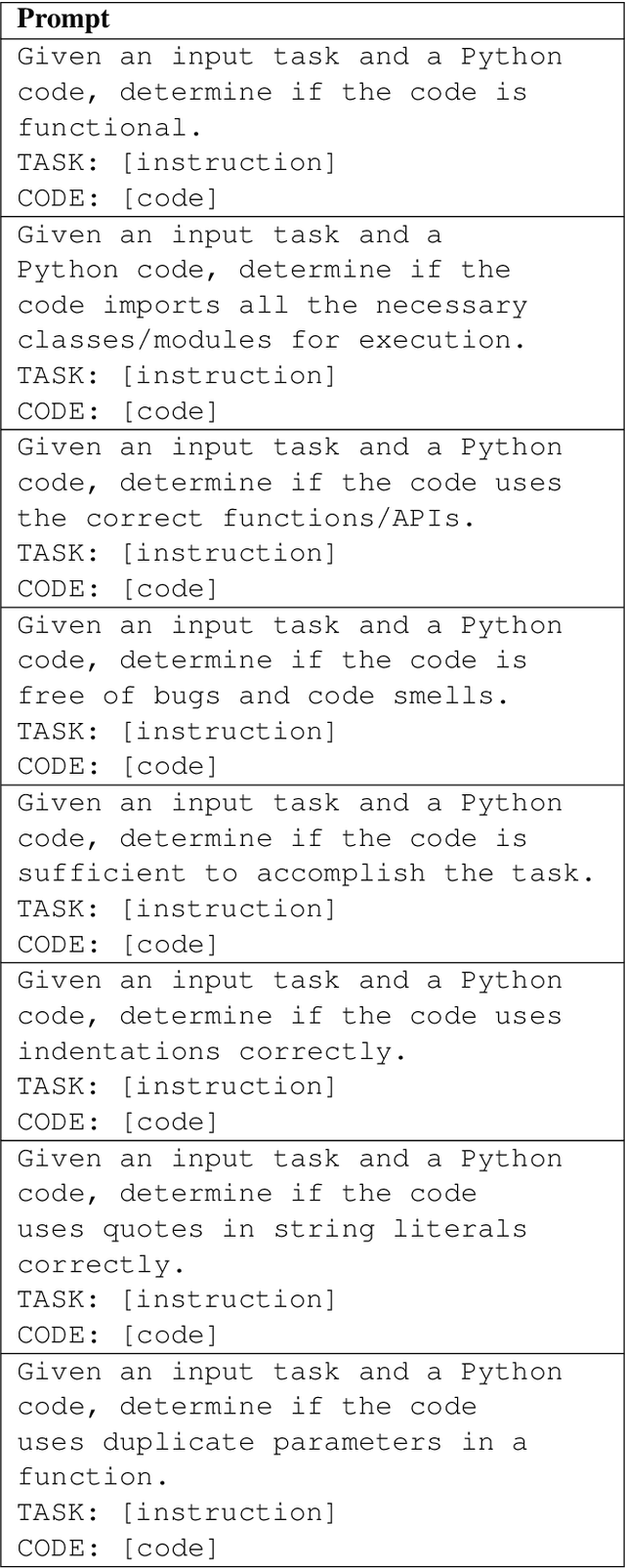
Abstract:Reinforcement Learning from AI Feedback (RLAIF) has demonstrated significant potential across various domains, including mitigating harm in LLM outputs, enhancing text summarization, and mathematical reasoning. This paper introduces an RLAIF framework for improving the code generation abilities of lightweight (<1B parameters) LLMs. We specifically focus on code generation tasks that require writing appropriate API calls, which is challenging due to the well-known issue of hallucination in LLMs. Our framework extracts AI feedback from a larger LLM (e.g., GPT-3.5) through a specialized prompting strategy and uses this data to train a reward model towards better alignment from smaller LLMs. We run our experiments on the Gorilla dataset and meticulously assess the quality of the model-generated code across various metrics, including AST, ROUGE, and Code-BLEU, and develop a pipeline to compute its executability rate accurately. Our approach significantly enhances the fine-tuned LLM baseline's performance, achieving a 4.5% improvement in executability rate. Notably, a smaller LLM model (780M parameters) trained with RLAIF surpasses a much larger fine-tuned baseline with 7B parameters, achieving a 1.0% higher code executability rate.
ProTIP: Progressive Tool Retrieval Improves Planning
Dec 16, 2023Abstract:Large language models (LLMs) are increasingly employed for complex multi-step planning tasks, where the tool retrieval (TR) step is crucial for achieving successful outcomes. Two prevalent approaches for TR are single-step retrieval, which utilizes the complete query, and sequential retrieval using task decomposition (TD), where a full query is segmented into discrete atomic subtasks. While single-step retrieval lacks the flexibility to handle "inter-tool dependency," the TD approach necessitates maintaining "subtask-tool atomicity alignment," as the toolbox can evolve dynamically. To address these limitations, we introduce the Progressive Tool retrieval to Improve Planning (ProTIP) framework. ProTIP is a lightweight, contrastive learning-based framework that implicitly performs TD without the explicit requirement of subtask labels, while simultaneously maintaining subtask-tool atomicity. On the ToolBench dataset, ProTIP outperforms the ChatGPT task decomposition-based approach by a remarkable margin, achieving a 24% improvement in Recall@K=10 for TR and a 41% enhancement in tool accuracy for plan generation.
Social Media Attributions in the Context of Water Crisis
Jan 06, 2020



Abstract:Attribution of natural disasters/collective misfortune is a widely-studied political science problem. However, such studies are typically survey-centric or rely on a handful of experts to weigh in on the matter. In this paper, we explore how can we use social media data and an AI-driven approach to complement traditional surveys and automatically extract attribution factors. We focus on the most-recent Chennai water crisis which started off as a regional issue but rapidly escalated into a discussion topic with global importance following alarming water-crisis statistics. Specifically, we present a novel prediction task of attribution tie detection which identifies the factors held responsible for the crisis (e.g., poor city planning, exploding population etc.). On a challenging data set constructed from YouTube comments (72,098 comments posted by 43,859 users on 623 relevant videos to the crisis), we present a neural classifier to extract attribution ties that achieved a reasonable performance (Accuracy: 81.34\% on attribution detection and 71.19\% on attribution resolution).
 Add to Chrome
Add to Chrome Add to Firefox
Add to Firefox Add to Edge
Add to Edge